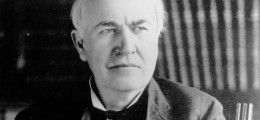Ford Motor Co. CEO Alan Mulally was a runaway winner of the 2010 MarketWatch CEO of the year, easily beating out Steve Jobs, Vikram Pandit, Jeff Bezos and Reed Hastings. Since the hiring of Mulally in 2006, Ford has been on a roll. While Ford continued to post financial losses through 2008, the company turned the corner in 2009 and started to reap the benefits of Mulally’s turnaround strategy. Sales and profits are up, the stock quadrupled in 2009 and doubled again in 2010 and the company has gained market share in back-to-back years for the first time since 1993. The company even posted its best third quarter profit ($1.7 billion) in over 20 years.
So how did an old aerospace guy with no automotive experience turnaround a struggling industrial icon? Let’s look at six elements of Mulally’s strategy that have enabled Ford to transform their financial and cultural picture in four short years:
Create a Simple and Compelling Message – By defining a simple, but powerful mission to build higher quality, more fuel efficient, safer cars, Mulally gave Ford’s employees something they craved: a message they could rally around and a vision of a company in which they could believe. “The more each of us knows what we’re really contributing to, the more motivated and excited and inspired we are.”
Make it About the Long Term – Second, Mulally invested in a long-range plan to create a global design language he called “One Ford.” The One Ford strategy meant selling off higher profile brands (Land Rover, Jaguar, Aston Marton and Volvo), bringing back a completely redesigned Taurus, and designing cars on a global platform.
Exude Contagious Optimism – Mullally understands that his positive energy is contagious. He exudes an optimism that is both inspiring and credible. He has an unwavering belief in his team’s plan, balanced by relentless realism about current market conditions, and a willingness to make adjustments along the way.
Develop a Truth Telling Culture – Mulally has created a culture in which telling the truth is paramount and gets rewarded. As an example, Mulally presides over a weekly “Business Plan Review” where the heads of Ford’s four profit centers and its 12 functional heads report on progress relative to their targets, share problems and collaborate on ideas for improvement.
Be Profitable on Lower Volumes – Under Mulally’s leadership Ford has reduced structural costs by more than $10 billion and will have reduced its production capacity by 40% by the end of next year. In a drive to be right-sized, Ford now has fewer factories, each producing more vehicles, which has allowed the company to be profitable at near-record-low sales levels.
Create Intimate Customer Relationships – Led by Scott Monty and his talented social media team, Ford has created an extensive online presence committed to creating transparency during the turnaround. In addition, Monty launched “The Ford Story,” a social media hub which builds intimate customer relationships through Facebook, Twitter, YouTube and other online communities.
Regardless of your size, industry or business goals, Mulally’s vision and values are equally relevant to every leader responsible for aligning people and driving change. If you want to dramatically increase your effectiveness and post unprecedented results, “stand for something beyond profit…rally your employees around a shared mission…practice realistic optimism…and tell the truth without fear.”





Leave a Reply